We occasionally link to goods offered by vendors to help the reader find relevant products. Some of these may be affiliate based, meaning we earn small commissions (at no additional cost to you) if items are purchased. Here is more about what we do.
Those who are new to home canning will soon learn how fun it can be!
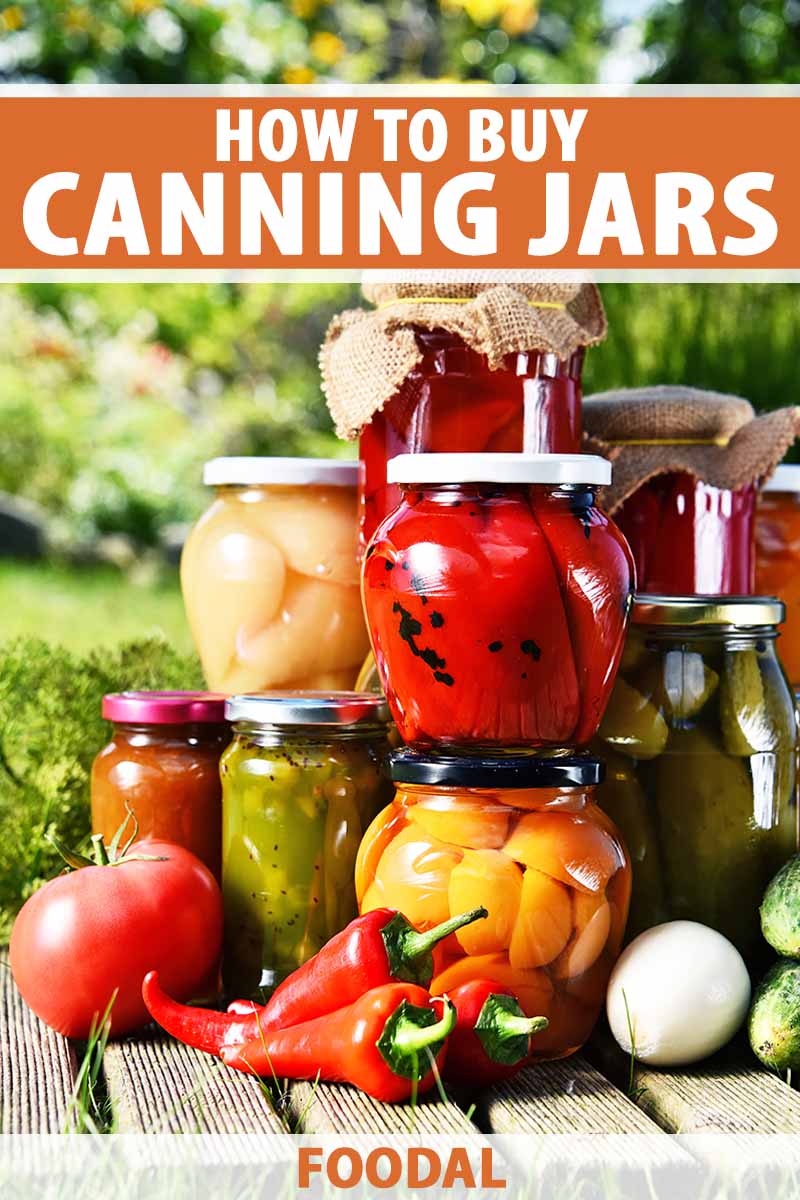
But it won’t be long before you’re facing a pile of freshly harvested produce, only to discover that you don’t have all of the equipment necessary for the process…
Most importantly, we’re talking about the jars themselves!
To save money while ensuring that you’re always ready to preserve great produce that you bought on sale and bumper crops, the home canner should stock up ahead of time on most – if not all – of the jars they’ll need for the canning season.
This article will explain where you can buy canning jars, the sizes that are most appropriate for your own personal needs and preferences, wide versus regular mouth sizes, and how to estimate the right amount to purchase.
Those dilly green beans won’t pickle themselves – discover all the buying basics right now!
How to Buy Canning Jars
Where to Buy
Many stores sell canning supplies, including hardware, grocery, and department stores.
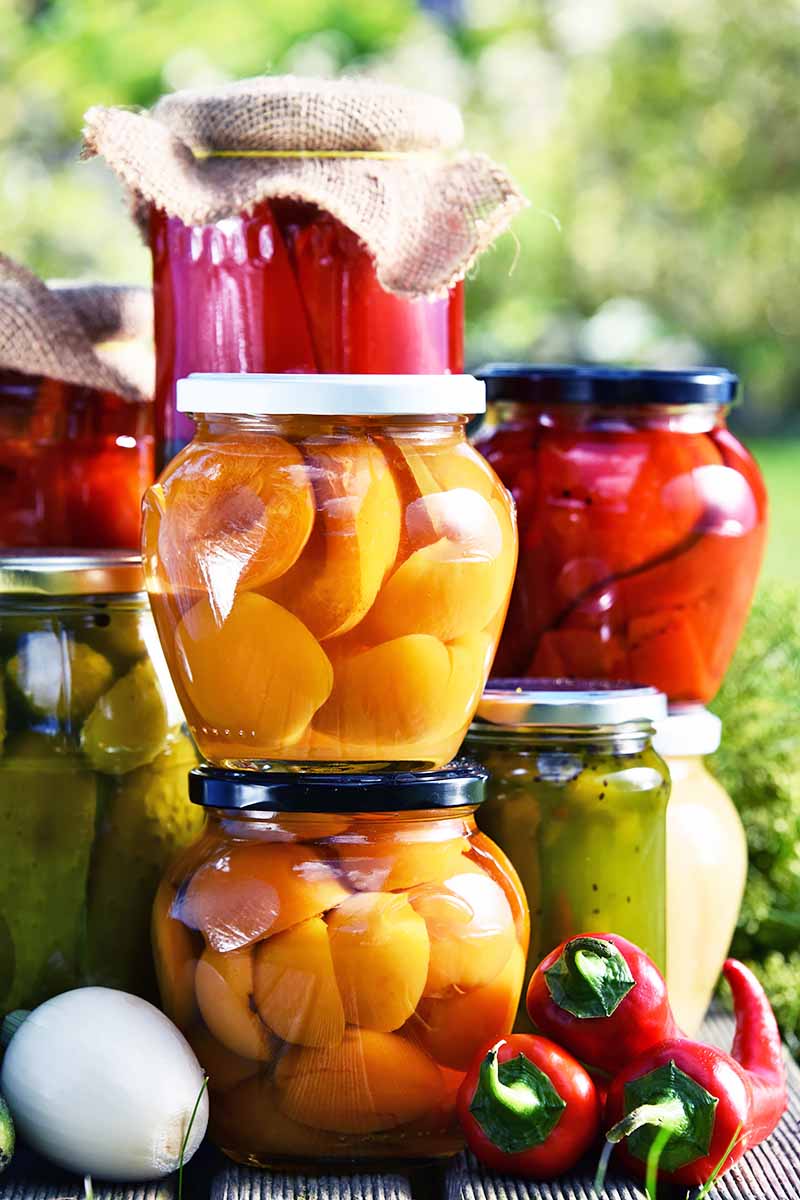 Most of them don’t keep large quantities of tools and equipment on hand in the off-season, like throughout winter and early spring, but they should have a good supply available during the summer and fall months.
Most of them don’t keep large quantities of tools and equipment on hand in the off-season, like throughout winter and early spring, but they should have a good supply available during the summer and fall months.
Because canning is a popular kitchen prep activity in many homes during peak seasons, you may run into an issue if your local store is experiencing a shortage, or if they run out completely before the canning season is over.
This means it’s very important to buy your supplies as soon as possible, and to keep enough on hand for when you need them. Make sure you have a large supply at the ready, and keep all of your equipment well-organized in your main pantry storage spaces.
For the first few years of canning, it’s definitely better to err on the side of caution and procure a few extra jars, as opposed to finding yourself stuck with too few.
And if you’re worried that you hoarded excessively and your supply has grown too large, I’m here to tell you that there’s no such thing. There will be plenty of needy people within your friend, family, or coworker circles to take any surplus off your hands – especially if you’ve filled them with tasty eats first!
In a pinch, if your local grocery store is completely out of stock, it’s a relief to know that you can buy your equipment online!
You’ll love it when the delivery driver comes to your front door with all the precious cargo you’re after in just a few short days.
There are also a few alternatives to buying brand new canning jars.
Because the glass versions can be reused indefinitely, as long as they don’t have any cracks or chips, this is a great item to find second hand.
Spreading the word among friends and family is a useful tactic, and this could result in the inheritance of a whole collection from a retiring canner. Many will be thrilled to find an appreciative home for their stock – all you have to do is ask.
Rummage sales are also a great option to pick them up, as are thrift stores.
With just a little care in use and handling, they may be reused season after season.
You will, however, have to supplement your collection with new lids each year – more on that later!
Sizes to Consider
Jars for home processing come in a wide range of shapes and sizes, with wide or regular mouths. We’ll touch on mouth size again a little later, so keep reading!
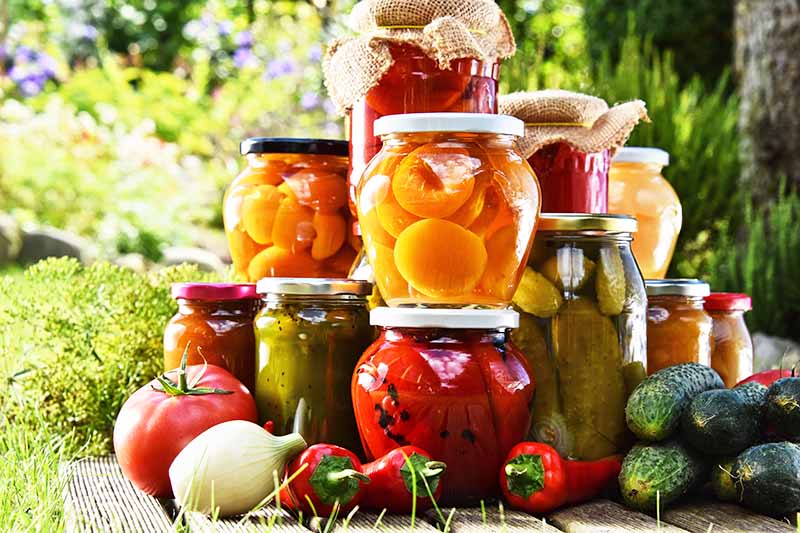
You’ll be able to buy an array of choices, ranging from the adorably tiny four-ounce jelly jars to the large half-gallon or gallon sizes ideal for bulk production.
The most common sizes are the half-pint, pint, and quart.
The largest and smallest options, and other novelty sizes and shapes, can be useful for some things. But they typically aren’t very cost effective since the manufacturers don’t produce many of them. Unless you specifically need something like gallon-size containers for making kombucha or tiny jelly ones to package homemade jam for gifts, it’s probably best to skip those.
Jars in any size can be plain, or they may have a decorative motif or brand name on their exterior. And some manufacturers may offer heritage or vintage collections, with colored glass and shapes available.
Keep the following common measurements and conversions in mind as you are looking through your options:
- 4 ounces = 1/2 cup
- 8 ounces = 1 cup = 1/2 pint
- 16 ounces = 2 cups = 1 pint
- 32 ounces = 4 cups = 2 pints = 1 quart
Understanding these basic conversions and measurements can be very useful to the home canner when estimating batch size and the number you will need per recipe. Choose sizes that are appropriate for whatever you are preserving.
Let’s take a deeper dive to look at some of the more common sizes, with suggested brands and products to purchase:
4-Ounce
The 4-ounce size is cute and sweet, and it can hold up to 1/2 cup.
It’s often nice to have a little stash of smaller decorative options to fill with your favorite recipes – they make great gifts, at any time of the year!
Verones 4-ounce glass jars, 40-pack, available on Amazon
These are particularly lovely to use to display homemade spreads on holiday cheese boards, or to offer as DIY wedding or party favors.
Verones sells a 40-pack 4-ounce set with lids, bands, and stickers labels, also available on Amazon.
8-Ounce
Half-pint sizes are also good for jams and jellies, and this is a good size for relishes, salsas, and other spreads as well.
Each holds 1 cup, or 8 ounces, so they might not be as useful for large families that would go through them really quickly.
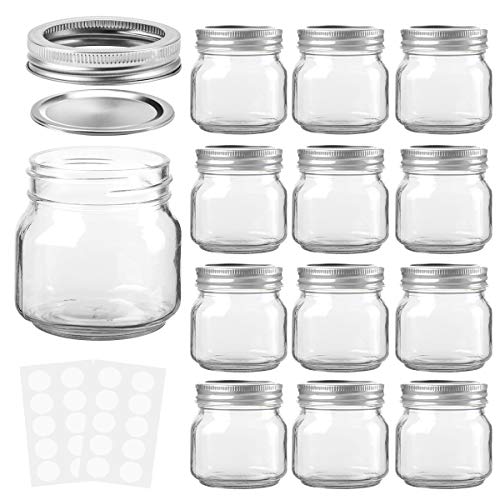
Kamota 8-ounce glass jars, 12-pack, available on Amazon
Kamota is another popular brand to purchase. Consider buying their 12-pack of 8-ounce glass jars with lids, bands, and sticker labels, available on Amazon now.
16-ounce
Pint-sized vessels are ideal for smaller-format specialty items like sauerkraut, giardiniera, chow-chow, and other pickled vegetables, preserved fruit, and applesauce.
If you prefer to stock your shelves with single-serving amounts of sauce, this size would also be ideal to store smaller quantities of your favorite savory sauces for pasta dishes.
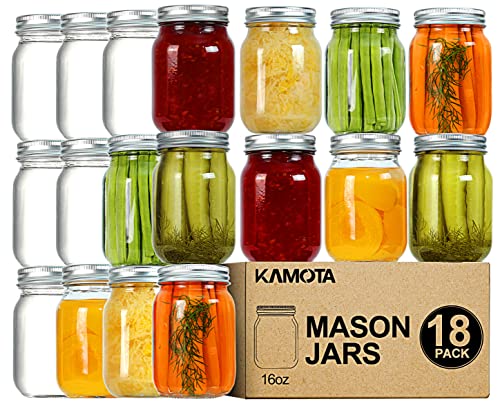
Kamota 16-ounce glass jars, 18-pack, available on Amazon
They would also be good for jams, jellies, and other spreads in households with large families that will go through the entire two cups of jelly long before it can start to mold in the refrigerator.
Consider buying Kamota’s 18-pack of 16-ounce glass jars with lids and bands, available on Amazon now.
32-ounce
Quart-sized options are practical for larger recipe yields.
Large families may find that it’s useful to preserve typical fare that will be served at meals, since they may consume a pint far too quickly.
If you like to do bulk meal prep for bigger gatherings, you’ll be happy to purchase a few of these 2-packs of quart-sized jars with lids and rings from Ball, available now on Amazon.
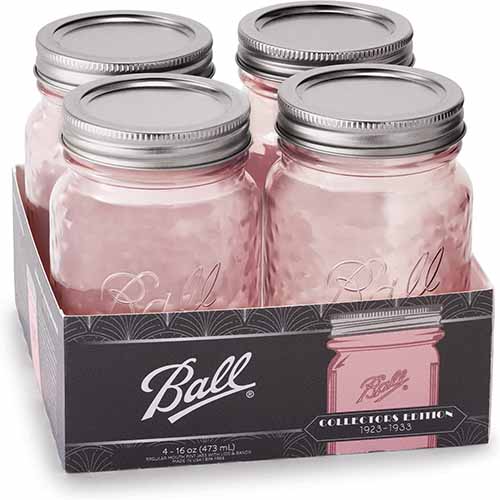
Ball quart-size vintage rose jars, 4-pack, available on Amazon
Ball, a prevalent canning brand, has released a series of vintage collections, like these rose-tinted vintage jars with textured glass. You can purchase a 4-pack of quart-size jars on Amazon. Lids and bands are included.
Wide vs. Regular Mouth
Confused about the difference between regular and wide mouths?
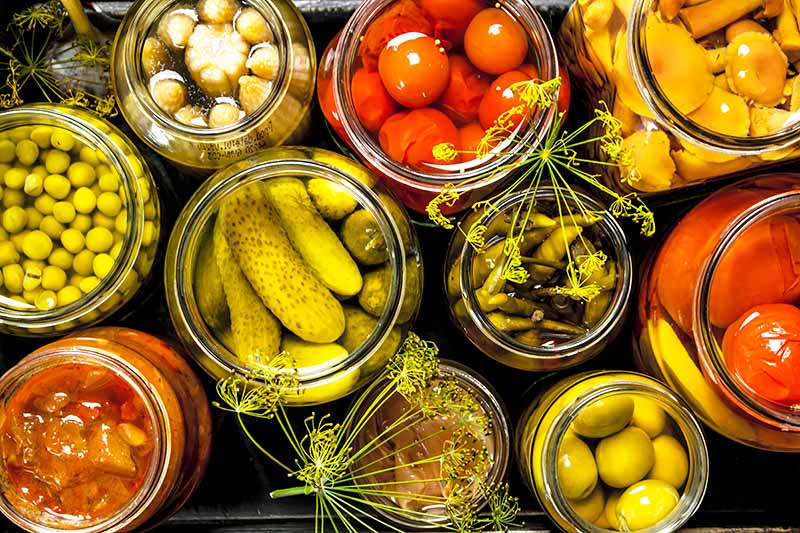
These terms simply refer to the size of the opening of the jar.
A regular or standard mouth is more tapered, and therefore smaller, at the opening. This is often preferred for filling with pourable, liquid-based items like jellies, salsas, and sauces.
A wide mouth has a larger opening, making it much easier to fill – it’s ideal for preserving whole or chunkier fruits and vegetables, since you won’t have any difficulty placing each item inside the vessel.
According to the USDA’S Complete Guide to Home Canning, a standard or regular mouth is about 2.38 inches in diameter while wide mouth has an opening of about 3 inches. These two measurements may vary slightly from brand to brand, but they are the common sizes for most options that hold between 4 and 64 ounces.
Lids and Bands
A two-piece self-sealing lid is the most common and the best choice to use when processing. It consists of a metal screw band and a metal lid with a sealing compound located on the bottom side.
When purchasing jars, they will most likely come with a matching set of metal screw bands and metal lids. This is the case with all of the options recommended in the previous sections of this guide.
Ball regular-mouth lids and bands, 24-count, available on Amazon
You can also purchase them separately, and these can be interchangeable from brand to brand, as long as you properly match the lid to the jar’s mouth size.
Ball offers a 24-count package of regular-mouth lids with bands that you can purchase on Amazon.
If you are in need of lids and bands for wide-mouth jars, Ball also sells a 24-count package of wide-mouth lids with bands, available now on Amazon.
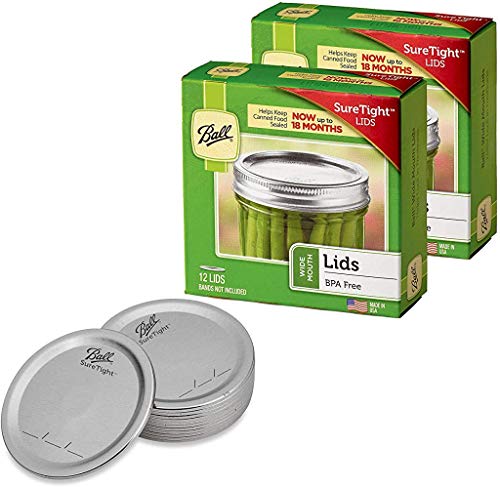
Ball wide-mouth lids and bands, 24-count, available on Amazon
According to the USDA’s Complete Guide to Home Canning, only buying the quantity you need for this year’s supply is recommended. Be sure to examine them carefully before using.
Do not use old, dented, or deformed lids, or lids with gaps or other defects or scrapes in the sealing gasket located on the bottom of the lid.
Once your jars have successfully been processed, sealed, and cooled thoroughly, the USDA also notes that the screw bands can then be safely removed. They are actually not needed on stored jars!
Screw bands can become difficult to remove if they are left on the stored jars for long periods of time, and will often rust – resulting in a band that is no longer safe to be used again.
If they are still in good condition, screw bands can be washed, dried completely, and stored in a dry area for later reuse.
Over time, however, you will need to reexamine them – if you notice the screw bands are rusty or exhibiting any other signs of disrepair, dispose of them.
As for the lids, they are ultimately designed to be used only once – the sealing gasket loses its potency after one use, and may not seal your vessel properly or safely if it is used repeatedly.
The USDA also notes that the sealing gasket in unused lids will work well for at least 5 years from the date of manufacture, explaining that the sealing compound in older lids may fail to seal anything.
Kilner 12-ounce round clip-top jars, 6-count, available on Wayfair
For any short-term storage of food items in the refrigerator, you also have the option to buy glass jars with plastic screw-top lids, or clip-top glass containers.
These are fun options if you like to regularly make new batches of refrigerator pickles or spreads without pressure or water bath of canning for shelf-stable storage, but you still want them to have the vintage look and appeal of that classic mason jar presentation.
Consider purchasing Kilner’s 12-ounce Round Clip-Top Jar in a set of six, available now on Wayfair.
Le Parfait’s Screw-Top Canning Jars are another nifty option, also available on Wayfair in a few different sizes, like this set of three 1-quart jars.
Estimating How Many You Need
In order to estimate the number you’ll need, it is helpful to begin by reviewing each recipe you are planning to make.
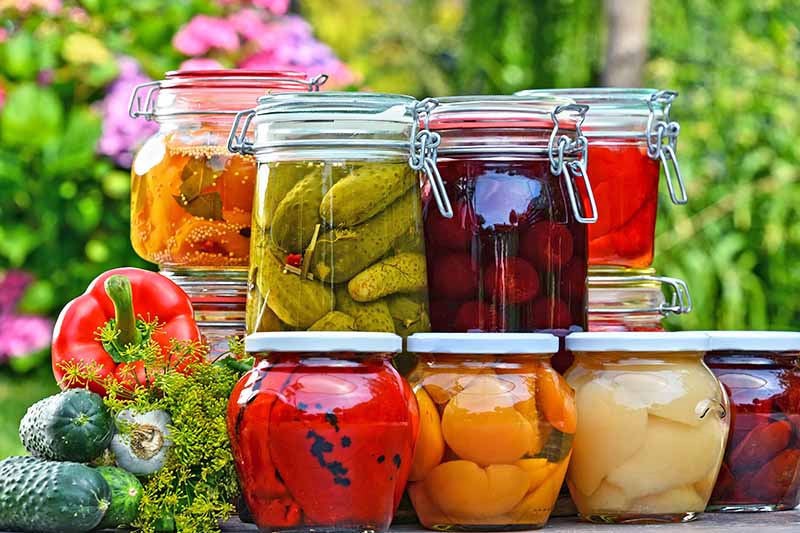
If your recipe includes a yield and recommended jar sizes, you have the exact guidelines you need to determine what you should purchase.
However, this number will change significantly if you will be making a double batch or altering the yield. You will also need to consider your food storage plans for the year.
Maybe you want to halve a recipe, if you only want to start playing around with canning as a small hobby.
Or you may decide to double, triple, even quadruple a recipe if you are planning to make big batches of canned items to fully stock your pantry.
For example, in our household, we use a quart of tomato sauce every two weeks on pasta night. We jar this in quarts rather than pints – this helps to save room, and fewer jars are needed.
Based on this calculation, I plan to can about 25 quarts of tomato sauce to supply our pasta nights for a year.
I add to that the other tomato sauce recipes that I like to make, such as pizza sauce and chili, and I know that I’ll probably want to have on around 40 quarts of tomato sauces on hand for a year’s supply.
By tracking consumption in your own household, you can estimate the amount of a given product that will be used in a year, and choose storage vessels that hold the amount you like to use per serving or over the course of a short period that can be stored in the fridge after they are open.
I recommend overestimating by a small percentage, just to avoid shortages and complaints from hungry family members, as well as any potential breakage!
Buy Appropriately, Can Successfully
Those of us who like to eat meals made from scratch all year round will find that keeping enough canning jars on hand, and planning ahead when fresh produce is plentiful and in season, will save time and money when winter comes along.
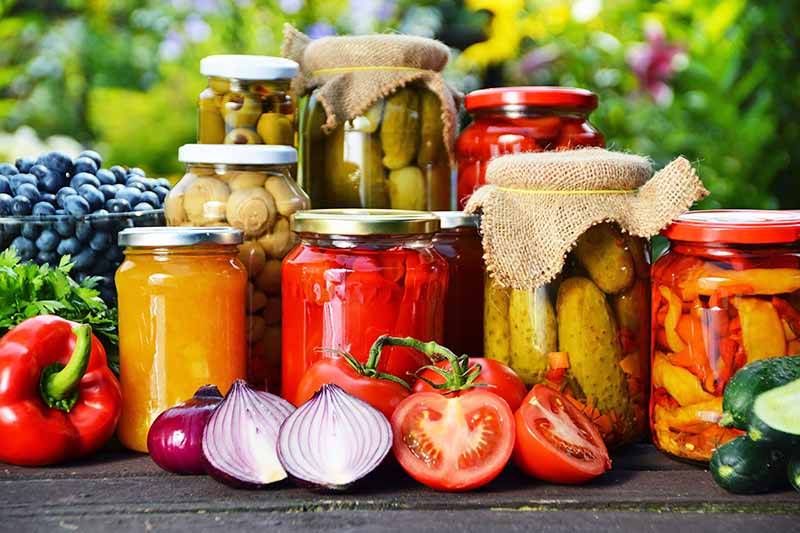
It all starts by purchasing the right style, size, and number of jars that will perfectly align with your personal home cooking resolutions and plans!
What options do you like to have at the ready in your kitchen? Do you prefer to use a certain size for your favorite recipes? Tell us about it in the comments below.
For more tips and tricks to safely preserve food that you can enjoy throughout the year, read more of our articles on home preservation methods. Start with these next:
- How to Preserve Fresh Herbs
- How to Make Sun-Dried Tomatoes with a Dehydrator
- Foodal’s In-Depth Guide to Top-Rated Pressure Canners
Photos by Nikki Cervone, © Ask the Experts, LLC. ALL RIGHTS RESERVED. See our TOS for more details. Originally published on August 21st, 2014. Last updated on July 13, 2023.
About Nikki Cervone
Nikki Cervone is an ACS Certified Cheese Professional and cheesemonger living in Pittsburgh. Nikki holds an AAS in baking/pastry from Westmoreland County Community College, a BA in Communications from Duquesne University, and an MLA in Gastronomy from Boston University. When she's not nibbling on her favorite cheeses or testing a batch of cupcakes, Nikki enjoys a healthy dose of yoga, wine, hiking, singing in the shower, and chocolate. Lots of chocolate.

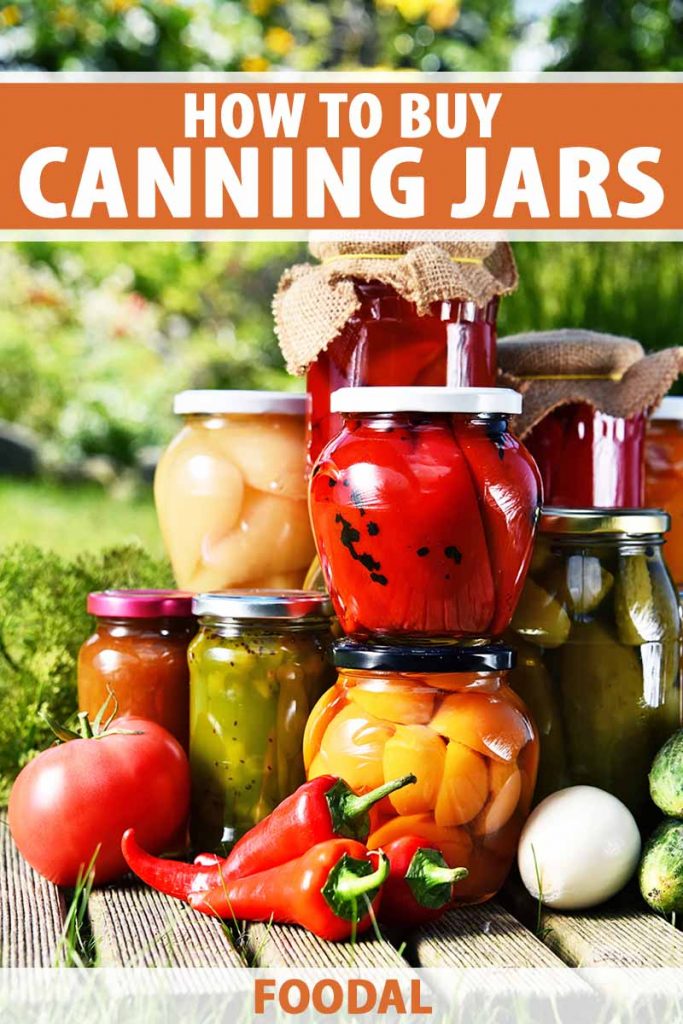
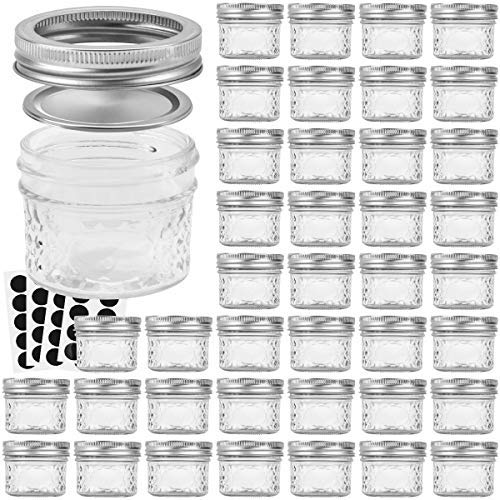
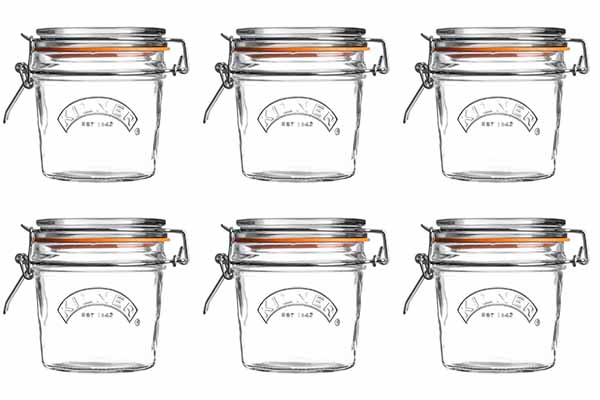
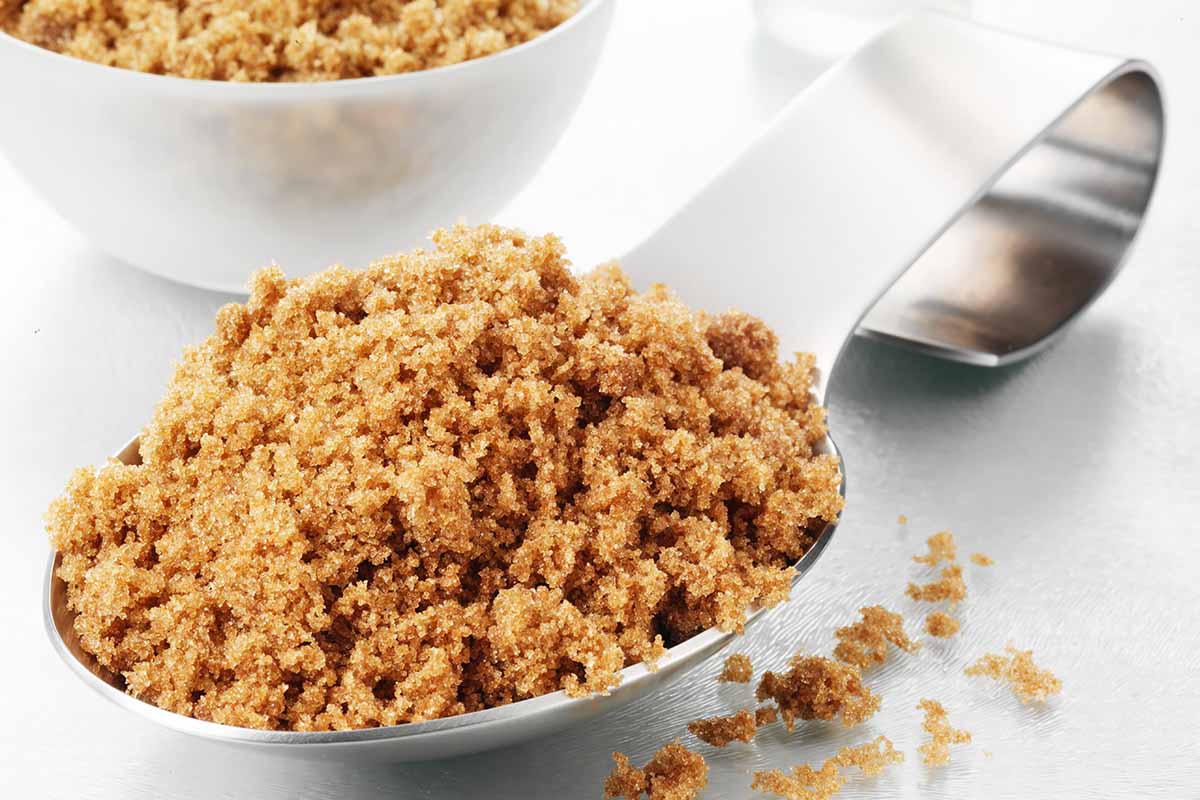
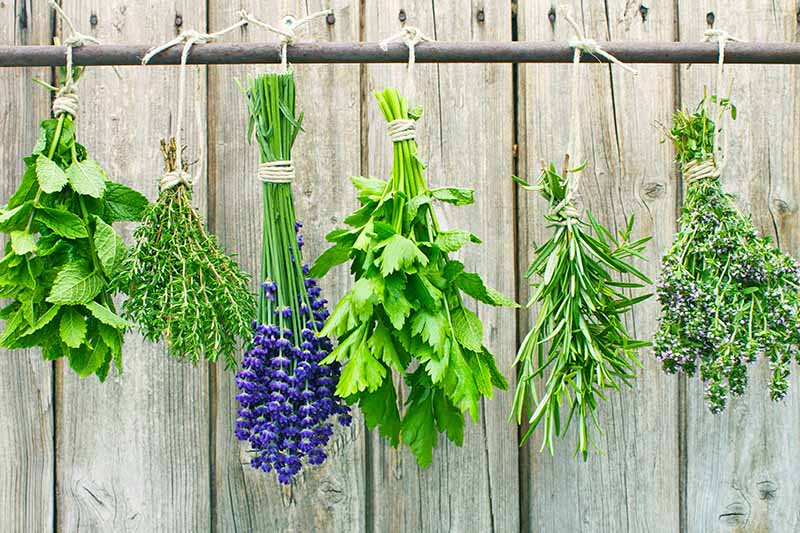
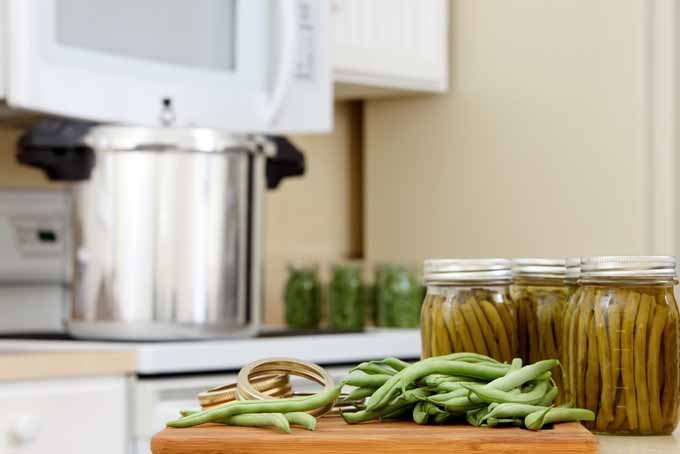
I’m just in the early stages of researching what I need to know about canning. There are so many canners to choose from, jars, dos and don’ts etc – it’s quite an exercise really.
I like your advice about the jars; it makes sense to have a few extra but without hoarding. Besides, my pantry is not big enough to cope with too much excess stuff. Up to now I’ve only done the water bath canning, but it’s the pressure canning that I would most like to do. I’d love to have a ready supply of soups, spaghetti sauce, fruits and vegetables of the season, for use throughout the year.
Thanks for explaining properly about the jars – another piece of research ticked off my list!
I have been looking for cans to buy to start canning. The best prices I have found are online. They are cheaper than any of the stores around me, even after shipping. I can’t wait to start canning my garden fruits and veggies! I remember my grandma canning when I was younger so I look forward to doing it with my kids.
Good advice. I feel though that if I were to go on Amazon, with all their suggestions of other products I might like, I might have more than just new jars coming to me…! Though I guess the choices would be larger there, with some more fancy looking jar for gift-giving.
What is also a possibility is subscribing to a “freecycle” group in your region. Mine advertised a few times free mason jars to give away; the second time I did try to get some, but they were already given away. They did promise to give me a notice when they would have more to give!
I think the best place to buy mason jars are online or in a resale shop. Sometimes I am surprised by how ridiculously cheap mason jars become when used. Ignore that, bleach it, & make a group of storage units for yourself.
I find that this varies though on what part of the USA you are in. In yuppie areas or pretty much all of California, they think every jar is an antique and is priced way more than it is worth. Even at Goodwill and the Salvation Army. The absolute best place to pick them up is at farm/country auctions in the Midwest and the South.
Thee jars are treated like antiques here in the UK too. Charity shops sell them for around £3 (or $5) per jar. I think it’s because everything “vintage” seems to be popular right now. On the whole Amazon seems to be cheaper, plus there’s the added bonus of not having to lug them all home.
I have found that the cheapest option in the UK is simply to raid the local supermarket for their cheapest and (usually) most appalling lemon or orange curd. It typically retails at £0.22-£0.25 for a 411g jar and the glue on the label is also so cheap that the slightest contact with hot water brings off the label easily. Ditch the contents, wash and sterilise the jar and you have a decent sized jar for very little money.
I’ve also seen a lot of mason jar crafts being advertised on Facebook and Pinterest, which could be contributing to the demand for canning jars, and creating a shortage in stores. I would probably buy them online as well, since I love getting deliveries, because it feels like Christmas. I think I’d like to start off small, since I don’t have much storage space here, so will have to see about buying just a few at first, then if that attempt proves successful, I can buy more.
Well written post and very informative. A post written this well is something that I can send to any newbie canner to have on hand in their household.
Even thought I haven’t really tried the canning method in order to preserve foods, I really love the idea of food being still kind of fresh with this method for a relatively long amount of time.
Unluckily, this method is not really popular where I live, so mason jars, especially for this particular use, are not really common here… so I think that the best method for me is to look online, find the best deal and order some.
Thanks for sharing!
Well when it comes to saving money and having thing in stock, using these kinds of jars really comes in handy, especially around this time of year when people are growing fresh produce. It reminds me of the pickled green beans that we would always get from our old neighbors, and which I try to emulate but I am missing something. I might need to give it another go, so thanks for sharing this.
Canning jars are a lot more expensive in the UK than in the US, sadly. The larger ones retail at £3-£4 each which is eye-wateringly pricey. I keep trying to source well-priced jars but I can never find any.
Canning is something that I learned from my grandmother and is a skill I still use on a regular basis. I can things from my garden for my own later use, but I have recently started selling some of the things that I can. It has been quite profitable. So far, I have only made jelly and peppers (in oil and vinegar). The peppers have sold extremely well. I was really worried about health codes and regulations, but where I live in Ohio, this type of item falls under “cottage goods” and has virtually no regulations at all.
When I first started canning fruits and vegetables I didn’t really care too much about the jars, but their quality is really important. I had fruits go bad simply because the jar was poorly made and it didn’t close correctly, there are some good suggestions in the article.
Canning is something that I have done with my grandmother and other family members since I was a little girl. I love it and still do it today. In fact, my canned peppers have actually won awards at fairs and other competitions and I sell them at the flea market every summer. It’s actually been time consuming, but rather l. I really am going to branch out and start canning jellies, jams, and salsas soon too. It’s great to enjoy fresh produce in the dead of an Ohio winter!
When canning foods a key to it is having a good jar. I usually buy local which turns out pretty good for me. For people who do not have a reliable place to buy jars this is a very good and informative post!
I would like to know if I can order for some of your products and if I can place an order with my credit card and if I can pick up an order by a private freight company.
Thanks,
Todd.
Thanks for your message, Todd. Follow the links for recommended items in our guide for purchase information from our trusted affiliates. We are an informative website that often recommends kitchen equipment and other products to our readers, but we do not sell these products ourselves.